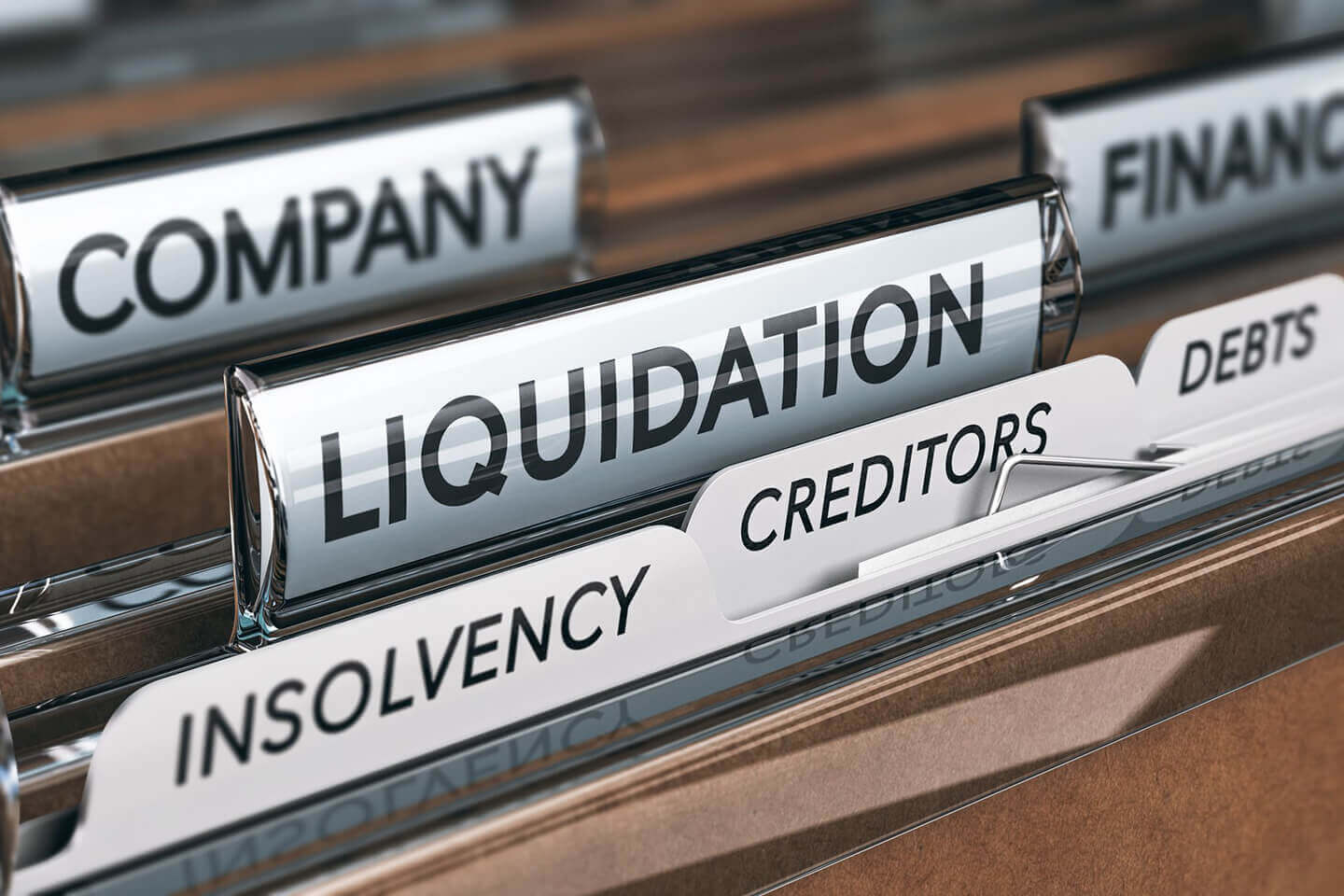After a prolonged period of turbulent transactions, a shortfall of cash, and poor financial health, it may be apparent that your business is no longer able to continue operating in the best interests of creditors and should therefore pursue a liquidation process. Failure to do so could result in committing a serious offense as you are intentionally worsening the position of creditors, accumulating debt, and exposing your business to legal action from creditors.
You may also explore a company liquidation process as your business has naturally reached the end of its lifecycle, due to owner retirement, refocusing business interests, or health vulnerabilities. The company liquidation process suitable to your circumstances will depend on whether your business is solvent, i.e. viable, financially healthy, and has strong cash reserves. If your business is insolvent, i.e. debt-ridden, liabilities outweigh assets and experiencing creditor pressure, you may be forced into compulsory liquidation or required to voluntarily seek an insolvent liquidation route, resulting in the closure of your business.
Jon Munnery, partner at UK Liquidators, company liquidation specialists, and UK’s leading service provider of fast company liquidations shares how to test your business for insolvency and the routes available to you.
Tracking financial health through insolvency test
To determine whether your business is viable or unable to undergo recovery due to extreme financial damage, you will need to carry out a test for insolvency which will determine your next step. A cash flow test for insolvency will assess if the business has enough funds to fulfill financial liabilities and meet essential expenses to maintain the daily running of the business. If you have limited cash flow and can no longer meet your financial commitments, both in the short-term and long-term due to cash flow problems, your business may be insolvent.
The balance sheet test for insolvency will measure the level of liabilities against assets. If liabilities outweigh assets, the business may be insolvent. The balance sheet test should carefully account for bad debt, contingent liabilities, and any further debts that are likely to occur, especially near term. Intelligent fintech platforms can track this on an ongoing basis, helping you spot signs of a struggle early in the process.
Solvent company liquidation
If your solvent business has a substantial amount in retained profits and you wish to permanently shut shop, a Members’ Voluntary Liquidation is a tax-efficient, company closure route. This liquidation process allows you to extract large funds efficiently and distribute them amongst shareholders.
Insolvent company liquidation
If your business is found to be insolvent and you voluntarily make the decision to close your business, a Creditors’ Voluntary Liquidation (CVL) is a formal insolvency procedure which allows you to close your business if there are no realistic prospects for recovery. A CVL is administered by a licensed insolvency practitioner who will liquidate assets to create funds to repay creditors. Any remaining debt may be written off and the business will then be removed from the Companies House register, ceasing to legally exist.
Compulsory liquidation
The compulsory liquidation process is typically initiated as a result of a winding-up petition against your company by a creditor to recoup outstanding funds. If your business is forced into compulsory liquidation, a liquidator will be appointed, your assets will be liquidated to repay creditors and the business will then be dissolved.
The liquidation process will vary for each business as this depends on the financial health, the chances of recovery, and the level of outstanding debt. Understanding each aspect of the liquidation process, the associated costs, and shareholder responsibilities during the process is instrumental. Seek advice from a licensed insolvency practitioner to guide you through each stage of the process and to make an informed decision.

